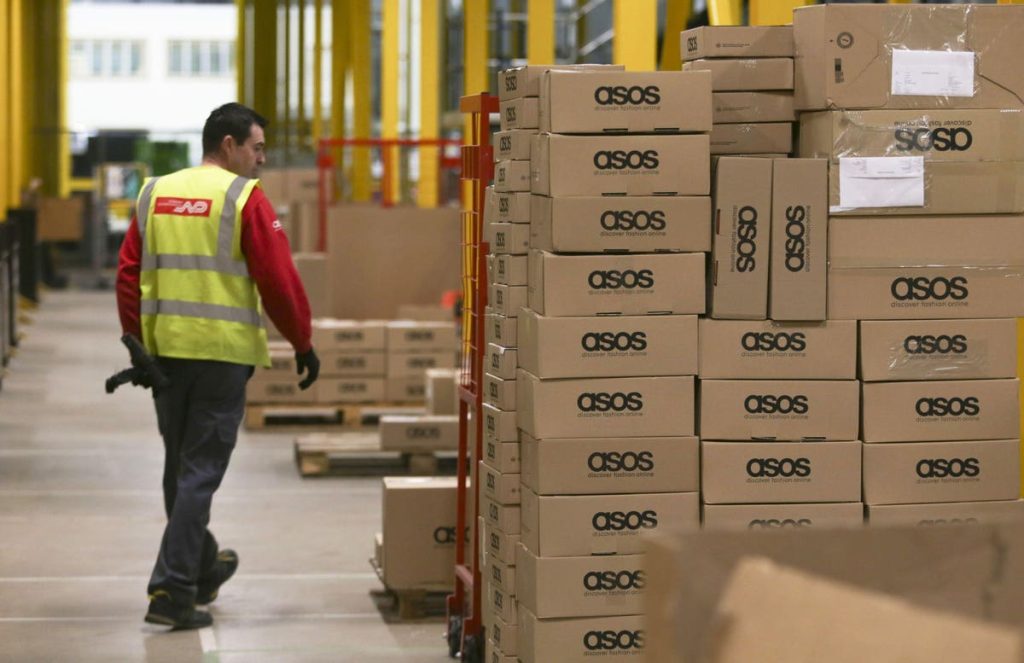Online retailer ASOS slumped on Wednesday as it announced a sharp fall in first-half sales.
At 561.2p per share ASOS’ share price was 11.7% lower in midweek trading. It has shed 56% of its value over the past 12 months as sales volumes have plummeted following the end of the pandemic.
Revenues at the FTSE 250 company dropped to £1.8 billion during the six months to February,. This was down 8% year on year.
Adjusted gross margins have stabilised more recently, ASOS said. Yet as 42.9% these were still down 20 basis points from a year earlier.
As a consequence ASOS’ adjusted pre-tax losses widened to £87.4 million from £14.8 million previously. This excluded the impact of a £128.2 million stock write-off, as well as property-related impairments, under its Driving Change transformation plan.
Broad Sales Weakness
Sales in ASOS’ UK marketplace dropped 10% in the first half while revenues in the US and across the rest of its territories (excluding Europe) declined 7% and 12% respectively.
Sales in Europe were flat year on year.
The company said that these geographical variations “[reflect] regional differences in the economic backdrop as well as country-specific profit actions taken by the company in-line with its focus on profitability over top-line growth.”
ASOS added that negative sales momentum had “broadly continued into March and April,” with around half of the decline driven by its Driving Change agenda. Group-wide sales are set to fall by low double-digit percentages for the full year, the firm predicted.
“Causes For Optimism”
Chief executive José Antonio Ramos Calamonte commented that “our focus is on improving our core profitability, prioritising order economics over top-line growth and I am pleased with the strategic and rapid operational progress the business has made in the first half of the financial year, against some very challenging trading conditions.”
He added that “while some of these changes have impacted short-term sales growth, there are many causes for optimism as we progress through the second half of the year. We are improving our gross margin run rate in the face of significant headwinds, are starting to see the benefits of a repositioned stock profile, and are taking action to reduce the proportion of our sales which are not profitable.”
The ASOS chief predicted that the company will return to sustainable profit and cash generation during the second half of the financial year.
More Pain Coming?
Adam Vettese, analyst at social investing firm eToro, notes that “online-only retailers such as ASOS and BooHoo were meant to be the final nail in the coffin for bricks and mortar retailers, but the High Street is fighting back post-pandemic.”
He added that the business is “unfortunate” in that its core demographic of “fashion-conscious twentysomethings” have been affected by the cost-of-living crisis more than any other age group.
Vettese predicted that “until that situation eases, investors can probably expect ASOS’ next couple of updates to be equally difficult reads.”
Russell Pointon, director of consumer at Edison Group, described the company’s latest update as “disappointing.” He said that that deteriorating market conditions mean that “the group has focused on improving order economics and emphasised profitability over top-line growth, with measures including the removal of unprofitable brands and the right-sizing of stock.”
Pointon notes that “the question for investors now is whether or not these cost-cutting initiatives will be enough to mitigate the heavy market pressures facing the online clothing brand.”
Read the full article here
